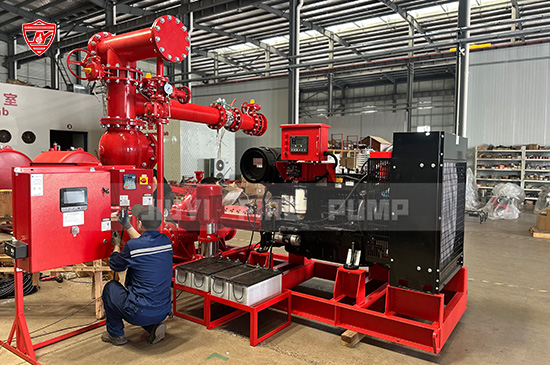Fire pump testing is an essential part of maintaining a reliable fire protection system. But the job isn't done until the pump is shut down safely and properly. Improper shutdown can cause water hammer, system pressure issues, and even damage to equipment. This article outlines a clear step-by-step procedure for safely shutting down your fire pump after testing, whether electric or diesel-driven, while complying with NFPA 25 and industry best practices.

A safe shutdown helps:
Protect pump components and system valves
Avoid pressure surges or water hammer
Ensure system integrity for the next emergency
Meet fire safety compliance requirements
Before shutdown, record the final system pressure, flow rate, and churn pressure (no-flow condition). This ensures full documentation of the test.
Slowly close the discharge valve to prevent a sudden pressure surge or water hammer, which can damage piping and valves.
For electric pumps, press the stop button or switch on the control panel.
For diesel pumps, follow the shutdown procedure on the controller — usually by switching the control to "Off" or "Manual Stop."
⚠️ Never stop the pump before closing the discharge valve — this can lead to backflow or system depressurization.
Wait a few minutes to monitor if system pressure stabilizes and check for any abnormal noises or leaks.
Ensure all alarms triggered during testing are reset. Restore the automatic mode on both the jockey and main fire pump controllers.
If temporary gauges or hoses were installed, drain and remove them properly to avoid accidental leaks or tripping hazards.
Document the entire testing and shutdown procedure in the inspection and maintenance log, as per NFPA 25 requirements.
Use a trained technician for diesel engine fire pump shutdowns.
Always wear PPE during testing and shutdown operations.
Test during non-peak hours to avoid disturbing the building’s pressure-sensitive systems.
Have an emergency procedure ready in case the pump fails to shut down.
A fire pump is a mission-critical asset. After every test, ensure the pump is shut down properly to keep your fire protection system ready for emergencies. By following the correct procedure, you minimize risks, extend equipment life, and ensure compliance with key standards like NFPA 20 and NFPA 25.